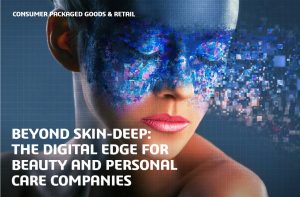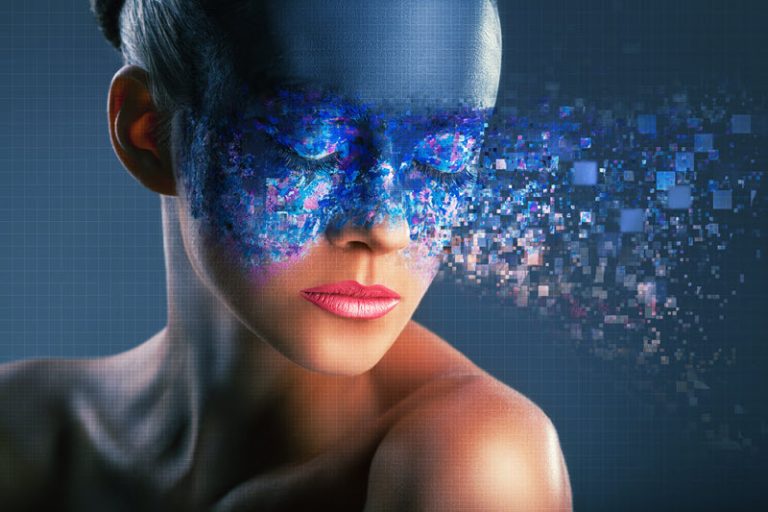The Beauty and Personal Care industry is as competitive as it gets in Consumer Packaged Goods (CPG). Brands fight for mindshare and market share. Consumer loyalty is hard to earn and worth the effort to maintain.
‘Beauty’ is more resistant to economic downturns than most discretionary CPG categories. You can credit “the lipstick effect” for that. A theory first stated in 1999 by Professor Juliet Shor, the lipstick effect hypothesizes consumers will indulge in prestige cosmetics during tough economic times because they are “little luxuries” providing an emotional lift when the purchase of higher-priced goods is postponed.
To seek competitive advantage, market leaders in the segment are turning to advanced scientific tools like artificial intelligence and machine learning, to mine their own data and find rich areas of exploration. Such fierce competition and increased use of digital innovation has pushed Beauty and Cosmetics Research and Development (R&D) teams to leverage these advanced tools to discover new and exciting consumer benefits for their products. The need for innovation has remained a hallmark of the industry for decades; the race for finding the ‘next’ level of benefits has never been hotter.
Key R&D initiatives in Beauty and Personal Care include:
Merging of Health and Beauty: The COVID-19 pandemic “has challenged beauty markets like never before,” notes industry research firm Mintel. It notes beauty and personal care companies have launched initiatives on face-mask-friendly cosmetics and skin care; aligned with immunity support research in other fields; and increased research on hand care for both skin care and hygiene benefits. One company formulated a unisex eau de cologne specifically for frontline health care workers, designed to support their sense of well-being despite their challenging professional circumstances.
Clean, Natural, and Sustainable: A majority of beauty and personal care consumers are drawn to products they believe match these three buzz words. The three genres are similar but not synonymous. “Clean” refers to products that are perceived as healthy and free from “bad” ingredients. “Natural” means a product is 100% derived from sources found in nature with nothing artificial added. “Sustainable” refers to how product ingredients are sourced, including the packaging.
67% of consumers would try new products perceived as clean
A consumer survey by Ipsos, “What The Future: Beauty” says 67% of interviewed consumers would try new products if perceived as “clean,” while “sustainable” brands are of interest to 55% of consumers. The R&D response is challenging, notes R. Alexandra Keith, CEO of Procter & Gamble Beauty. As quoted by Forbes, “If the entire industry switched to organic and natural materials, it would be a problem for the Earth and for food sources.”
Reflecting reality: The Ipsos survey also notes increased interest in beauty products “that look like me.” Fifty-four percent want cosmetics that positively reflect their age; 51% say they want a beauty regime that reflects personal reality (cellulite, tooth gaps, scars, gray hair, wrinkles, etc.).
With traditional technologies and formulation research, getting new products to market to respond to these trends could take years. Companies no longer have the luxury of long R&D cycles. Abundant competition and relentless social media messaging have combined to make consumers more willing to try new products and abandon old beauty regimens.
51% of consumers want a beauty regime that reflects personal reality
Despite the need to work at a digital pace, many labs still use paper-based or business software tools for product formulation research. One way beauty and personal care companies can advance their R&D is by using electronic lab notebook (ELN) technology. Companies implementing in-silico product testing and ELNs have been known to reduce documentation time by 50% while boosting data reuse by 85%.
But it is the area of front-end-innovation where a step change needs to be made. Capturing scientific data in a common technology framework makes it easier to apply cutting-edge technologies like 3D modeling, machine learning, simulation, and predictive analysis. R&D groups can virtually design products and optimize formulations by screening for the best combinations, creating a framework of iterative collaboration that leads to reduced development costs and accelerated innovation. Researchers can focus their knowledge and know-how on scientific innovation at the molecular level, collaborate and improve decision making by automating the scientific analysis of data from different research areas, and rapidly exploring, visualizing and reporting their research results in one digital environment.
The right scientific and laboratory solutions will strengthen the industry’s ability to quickly turn scientific discoveries into new consumer product experiences.
 To learn more, download our e-book called Beyond Skin Deep: The Digital Edge for Beauty & Personal Care Industry
To learn more, download our e-book called Beyond Skin Deep: The Digital Edge for Beauty & Personal Care Industry

